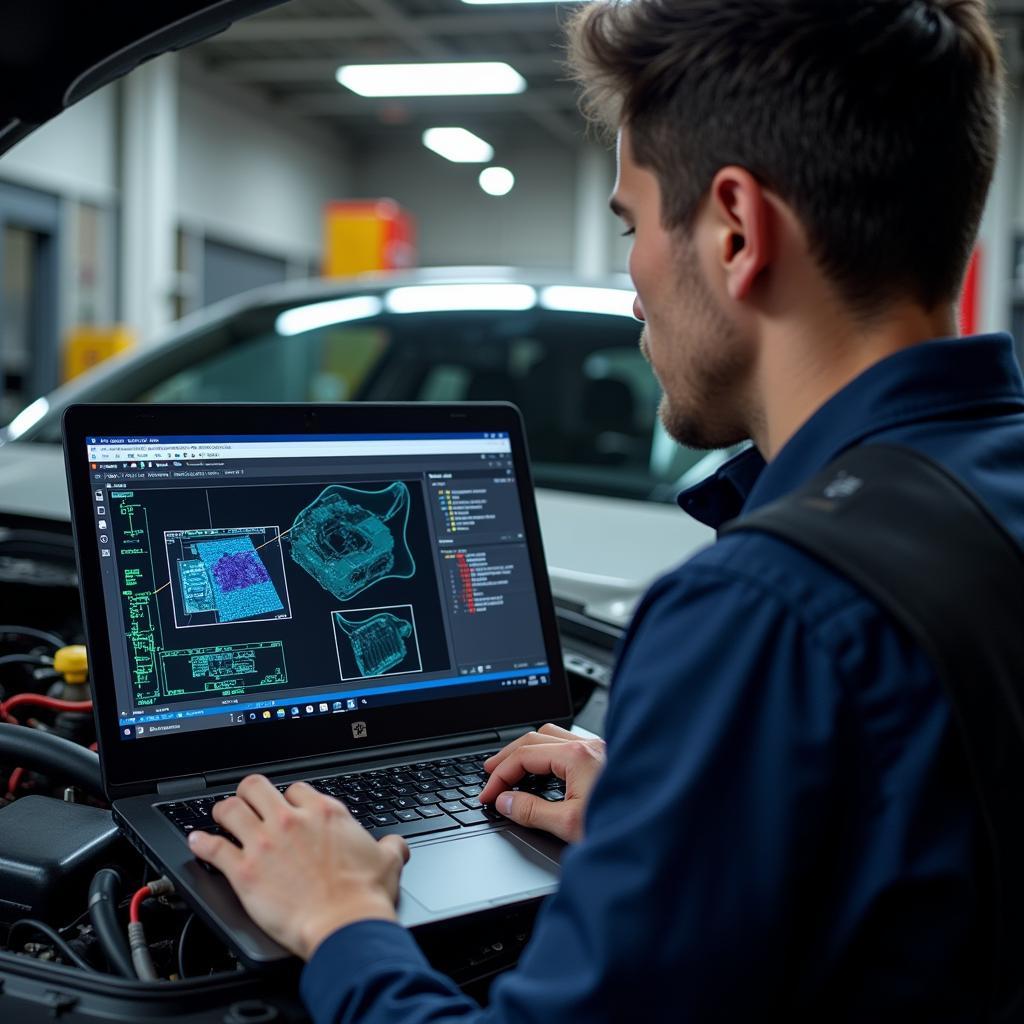The brake control unit warning light, often appearing as a red exclamation mark within a circle or the word “BRAKE,” is a crucial safety indicator in your vehicle. This light illuminates when your car’s onboard computer detects an issue within the braking system, potentially affecting its performance and jeopardizing your safety.
Understanding the Brake Control Unit
The brake control unit, sometimes referred to as the Electronic Brake Control Module (EBCM), serves as the brain of your car’s intricate braking system. It is responsible for managing a wide array of braking functions, including:
- Anti-lock Braking System (ABS): Prevents wheel lockup during hard braking, maintaining steering control.
- Electronic Brakeforce Distribution (EBD): Optimizes braking force distribution between front and rear wheels based on vehicle load.
- Traction Control System (TCS): Helps prevent wheel spin and loss of traction during acceleration.
- Electronic Stability Control (ESC): Detects and helps correct oversteer or understeer situations, enhancing vehicle stability.
Common Causes of a Brake Control Unit Warning Light
A glowing brake control unit warning light signals a potential problem within the braking system. Here are some of the most common culprits:
- Faulty Wheel Speed Sensor: These sensors relay wheel speed information to the brake control unit. A malfunctioning sensor can disrupt ABS, TCS, and ESC functions.
- Worn Brake Pads or Rotors: Excessively worn brake components can trigger the warning light as they impact braking performance.
- Low Brake Fluid Level: Insufficient brake fluid can indicate a leak in the system, reducing braking pressure and potentially leading to brake failure.
- Brake Control Unit Malfunction: While less frequent, the brake control unit itself can experience internal faults, necessitating repair or replacement.
- Electrical Issues: Problems like damaged wiring, loose connections, or a blown fuse within the braking system circuitry can disrupt communication with the brake control unit.
What to Do When the Brake Control Unit Warning Light Comes On
If your brake control unit warning light illuminates, it’s crucial to address the issue promptly. Here’s a step-by-step guide:
- Assess Your Surroundings: Safely pull over to the side of the road when it’s safe to do so.
- Check Your Brake Fluid: Carefully inspect the brake fluid level in the reservoir. If it’s low, adding brake fluid might temporarily alleviate the warning. However, it’s vital to have the system inspected for leaks.
- Proceed with Caution (If Possible): If the brake pedal feels normal and the warning light is intermittent, you might be able to cautiously drive to a nearby mechanic. However, if the light is constant or accompanied by unusual braking behavior, it’s safest to have your vehicle towed.
- Seek Professional Diagnosis: A qualified mechanic can accurately diagnose the problem using specialized diagnostic tools to read fault codes stored in the brake control unit.
Can I Drive with the Brake Control Unit Warning Light On?
While driving short distances with the brake control unit warning light on might seem possible, it’s strongly discouraged. Driving with a compromised braking system significantly increases the risk of accidents. Remember, safety should always be your top priority.
Remote Software Solutions for Brake Control Units
In certain cases, the brake control unit warning light might be triggered by software glitches or outdated firmware. Modern vehicles are increasingly reliant on software, and just like your smartphone or computer, updates and fixes are released periodically.
That’s where remote software services come into play. Specialized technicians can remotely access your car’s computer system, diagnose software-related issues within the brake control unit, and install necessary updates or patches. This can potentially resolve the issue without the need for physical part replacements, saving you time and money.
Conclusion
The brake control unit warning light is not a signal to ignore. It’s a crucial safety indicator that should never be disregarded. By understanding the common causes, knowing how to react, and considering the potential of remote software solutions, you can ensure your safety and maintain your vehicle’s braking system in optimal condition. Remember, when it comes to brakes, proactive maintenance and prompt attention to warning signs are always the best course of action.

